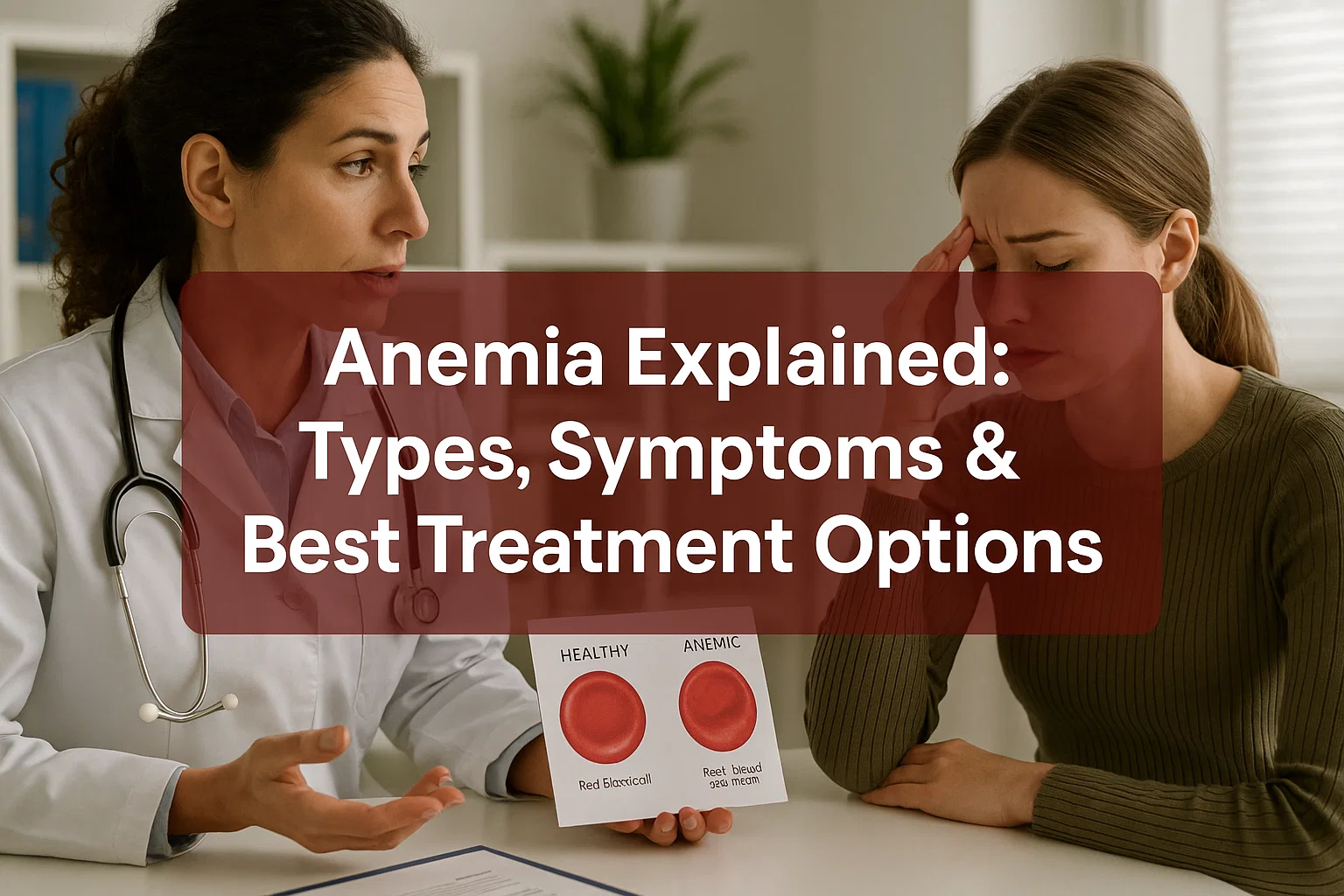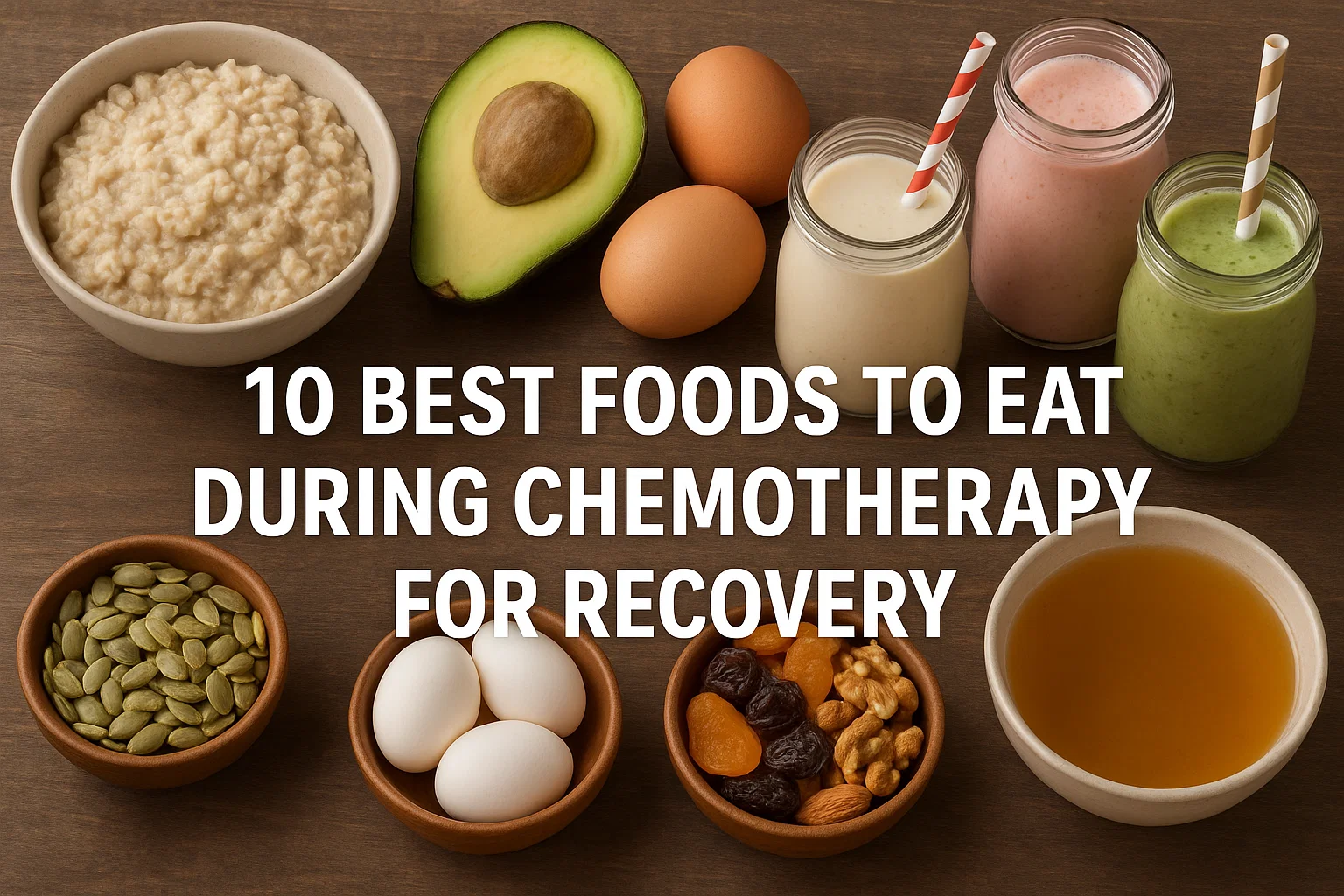Anemia Explained: Types, Symptoms & Best Treatment Options
Anaemia is a common health problem that nutritional deficiencies, chronic illness, or genetic causes may cause. Knowledge about different types of anaemia, recognising early symptoms, and researching effective treatment choices can help manage anaemia in a much more effective way. Let’s get started.
What is anaemia?
Anaemia is a condition caused by a deficiency of iron haemoglobin in the blood due to low Red Blood cells (RBC) levels needed for carrying oxygen to different parts of the body. Some types of anaemia are inherited, but most people develop this throughout their lifetime; it can be either short-term or long-term, depending on the extent to which it affects the person. A severe anaemic condition can be a warning sign of a chronic illness that requires immediate medical attention.
What are the different types of anaemia?
- Vitamin deficiency anaemia
- Thalassemia
- Aplastic anemia
- Iron deficiency anaemia
- Sickle cell anaemia
Aplastic anaemia. It is a life-threatening anaemia and rare in that the body does not make enough RBCs required for normal functioning. Its risk factors include infections, certain medicines, autoimmune disease, etc.
Iron deficiency anaemia. When the iron level in the blood drops due to heavy menstrual bleeding, some blood cancers affect the haemoglobin level, causing this type of anaemia.
Sickle cell anaemia. It is an inherited blood disorder in which RBCs polymerise under low oxygen tension, leading to an unusual shape called a sickle. These irregular blood cells are unable to bind oxygen effectively and die, causing a shortage of RBCs in the body.
Thalassemia: It is a genetic disorder that affects haemoglobin production, causing oxygen deficiency in body tissues. Common types include alpha and beta thalassemia, with severity ranging from mild (no or few symptoms) to severe, requiring medical attention.
Autoimmune Anaemia: It is a hemolytic anaemia in which your immune system starts attacking the red blood cells.
Macrocytanaemia: Caused by the large RBC due to vitamin deficiencies and includes both megaloblastic and non-megaloblastic anaemia.
Megaloblastic anaemia: A type of macrocytianaemiaia caused by impaired DNA synthesis, specifically due to folate and vitamin B12 deficiency.
(Note: All megaloblastanaemias are macrocytic, but not all macrocytic anaemias are megaloblastic.)
Pernicious anaemia: An autoimmune condition that prevents your body from absorbing Vitamin B12, an essential component for Red Blood cells.
Vitamin deficiency: Essential vitamins such as folate and B-12 are also required to make healthy red blood cells. A diet that doesn’t have enough of these and other essential minerals and nutrients can result in low haemoglobin levels and lead to vitadeficiency anaemia.
What are the symptoms of anemia?
Symptoms may vary depending on the condition and seveAnaemiaAnemia ranges from mild to severe, which can worsen if left untreated. Symptoms include:
- Weakness and Tiredness
- Heavy Breathing
- Rapid heartbeat
- Chest pain.
- Cold hands and feet.
- Headaches.
- Pulsatile tinnitus (constant noise in the head that no one can hear)
What is the main cause of anaemia
The main cause of anaemia is iron deficiency due to an iron-deficient diet nd essential vitamins such as folate and vitamin B12, required for the formation of haemoglobin in the blood. Abnormally low numbers due to chronic conditions and inherited conditions can lead to Severe anaemia that requires medical attention.
What are the possible risk factors for anemia?
Age: Senior citizens over the age of 65 are at increased risanaemianemia.
Deficient diet. A diet deficient in iron, vitamin B-12, and folate can increase the rianaemiaanemia.
Intestinal Diseases: Diseases, such as Crohn’s disease and celiac disease, can affect nutrient absorption and may cause malnutrition or vitamin def,whichncy that can increase anaemia.
Irregular periods. Loss of RBC due to heavy bleeding during periods may lead to an increase in anaemia.
Pregnancy. Lack of essential multivitamins such as folic acid and iron during pregnancy can increase the risk of anaemia.
Chronic conditions. Cancer, kidney failure, diabetes, and other chronic illnesses can all raise the risk of anaemia. Chronic blood loss from an ulcer can deplete the body’s iron stores, resulting in iron deficiencanaemiaia.
Biological history. A family history of blood disorders such as thalassemia and sickle cell anaemia may increase the risk of anaemia.
Other blood disorders: They include autoimmune diseases, blood abnormalities, and several clotting disorders that raise the risk of anaemia. Anaemia can result from bad habits that alter the RBC count, such as smoking, alcohol use, and taking certain drugs.
What are the diagnostic tests to detect anaemia?
There are different blood tests available to check the level of iron and haemoglobin in your body. The test includes
-
- CBC blood test—checks for the blood cells, such as RBCs and platelets
- Serum iron test—checks for the level of iron in blood
- Haemoglobin test—checks fthe ohaemoglobinin level in blood.
- Red blood cell count—checks for the RBC level in blood.
- Hematocrit test: measures the percentage of RBC in blood.
- Reticulocyte test—checks for the immature RBC, or whether bone marrow is producing enough healthy RBC or not.
This test determines the cause and provides comprehensive details about all the factors causing the body’s low iron ahaemoglobinbin levels.
Prevention
How to prevent anaemia?
You can lower your anaemia by including these dietary supplements, such as
Iron. Iron, being an important element to make haemoglobin, is found in some of the iron-rich diets, which include lean meats, beans, lentils, iron-fortified cereals, dark green leafy vegetables, and dried fruit.
Folate (Vitamin B9). Found in fruits, dark green leafy vegetables, green peas, kidney beans, peanuts, and grain products such as cereal, pasta, and rice, essential for DNA synthesis, cell growth, and RBC formation.
Vitamin B-12 (Cobalamin). Foods such as meat, dairy products, fortified cereal, and soy products are rich in vitamin B12, which helps in cell growth and formation.
Vitamin C. It is one of the essential nutrients that helps to improve the blood iron level and reduces the risk of anaemia. It is present in citrus fruits and juices, peppers, broccoli, tomatoes, melons, and strawberries.
What are the medications to treat anaemia?
Medications include:
Erythropoiesis-stimulating agent: Often used in chronic kidney disease (CKD), these agents stimulate bone marrow to produce cells.
Immunosuppressants: In case of an autoimmune condition, your provider may prescribe medicines to suppress your immune system from attacking your cells.
A final thought
Understanding the symptoms and causes anaemiamia, which ranges from mild to severe, is crucial for early detection and effective treatment. A low haemoglobin level in your blood than normal has a severe impact on the body. If you have any symptoms like fatigue, tiredness, loss of appetite, dizziness, and body pain, it may be linked to certain conditions like autoimmune conditions, blood disorders, cancer, etc. Get treated at the centre for fast and better recovery.
Frequently Asked Questions
Is anaemia curable?
Yes, many types of anaemia are curable depending on the treatment options and their severity and dietary changes and supplements taken.
Is anaemia a serious condition?
It can be serious if it becomes severe. Milanaemia can be treated with certain precautions and medications. In case of an inherited condition like sickle cell anaemia, lifelong complications can lead to lifelong health issues.
What are the five common symptoms of anaemia?
- Fatigue and weakness
- Pale skin
- Heavy breathing
- Chest pain
- Headache and dizziness






